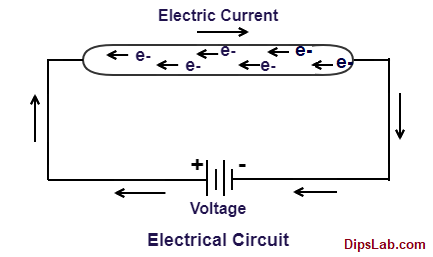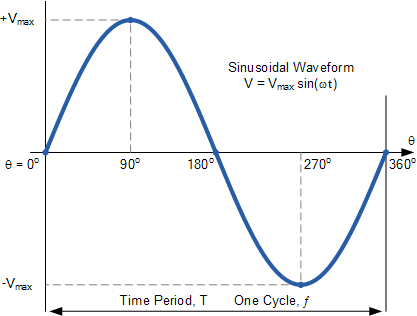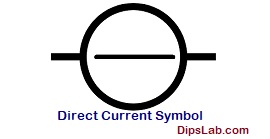Today, we are learning about the most basic concept- Electric Current.
If you are into Electrical Engineering, you keep hearing this term now and then.
There are many things to learn about it- ‘what is Electric Current?’ and ‘how does Electric Current generate?’.
The evolution of the electric current starts from the atom. What is the atom?
In the universe, every substance is made by the atom. This is more of a Physics concept.
An atom consists of the smallest tiny particle – proton, electron, and neutron. These particles are having a different charge. Proton gives positive, an electron gives the negative charge, and neutron gives no charge (neutral).
Proton and neutron are present in the nucleus. The nucleus is a central part of the atom and electron moves around the nucleus in the outermost orbit of the atom.
The outermost of free electrons are loosely bounded in orbit. It can easily move and attracted to other particle-like protons.
As the free electron is moving in the orbit, the atom is electrical in nature. Particles like protons and electrons are responsible for generating electric current.
Now, let’s understand, how does electric current flow in the circuit.

What is Electric Current?
The basic definition of the electric current:
The free-electrons that are continuously flowing through a conductor in a specific direction is called as Electric Current.
The below figure shows the movement of the free electrons in the conductor.

The notation that we are following in this tutorial: Electric current is represented by the ‘I’. And it is measured in Ampere (A).
The flow of electrically charged particles depends on the type of conductor or material of the conductor.
To flow the particles, we require a good and economic conductor like copper, aluminum. They provide good quality and strength for flowing the current.
How does electrical current work?
The electrical conductor consists of a large number of charged particles especially, free electrons. These charged particles occur in a random position in the conductor.
These charged particles require some potential energy for flowing in a specific direction.
When any potential energy or voltage source is provided to the conductor, the free-electron of the conductor moves from the negative terminal to the positive terminal.
Due to the flowing of charged particles in a defined direction generates an electrical current.

The conventional electric current is flowing opposite to the direction of electrons. Hence, the electric current always flows from the positive terminal to the negative terminal (i.e. high to the low potential).
Note: The flowing of the electric current requires a closed circuit.
How to calculate Electric Current?
As I said earlier, Ampere is the unit for calculating current in the circuit.
You can calculate the electric current in two ways.
1. To calculate Electric Current from Charge and Time
According to the basic working, an electrical current is calculated from the charged particle and time.
Electrical Current, (I)= (Charge/Time)= [(No. of charge)*(electron)/Time)] (Unit- Ampere)
According to the above formula,
The rate of the flow of electrical charge particles (q) passing through the cross-section areas of the conductor in the time (t) is called as Electric Current.
This formula states that when one-coulomb charge particle flows in one second, the one-ampere current is produced in the circuit.
Suppose, Charge(q)=1 Coulomb and Time(t)= 1 Second, then
Electrical Current (I) = (Charge/Time) = (1/1) = 1 (Unit- Ampere)
2. Calculating Electric Current by using Ohm’s Law
According to Ohm’s Law,
The flowing of an electrically charged particle in the conductor is directly proportional to the potential difference between the two terminal of the conductor at the constant resistance.
Formula to calculate Electrical Current by ohm’s law.
Electrical Current (I) = (Voltage/Resistance) (Unit- Ampere)
You can easily calculate the value of electric current by using the electrical calculator.
[CP_CALCULATED_FIELDS id=”19″]
[CP_CALCULATED_FIELDS id=”20″]
[CP_CALCULATED_FIELDS id=”7″]
Types of Electric Current
Electric current is classified into two types.
- Alternating Current (AC)
- Direct Current (DC)
Let’s see one-by-one.
1. Alternating Current (AC)
The electric charge particles can flow in both the direction. The current which is generated in the circuit is called ‘Alternating Current’.
The symbolic representation of the alternating current:

AC flows in the bi-direction position. It is sinusoidal in nature.
It completes the positive half cycle during a specific interval. In the next interval, it completes the negative half cycle.
From the following figure, you can easily understand the positive and negative half cycle during the periodic time ‘t’.

Sinusoidal Waveform
This alternating current works on the constant frequency like 50 Hz or 60 Hz. In India, mostly 50 Hz frequency is used in the domestic, commercial, and industrial purposes.
2. Direct Current (DC)
The electric current which flows in only one direction is known as ‘Direct Current’.
The symbolic representation of the direct current:

DC flows only in one direction (unidirectional).
The main source of DC currents is solar cells, batteries, etc. It operates at zero frequency.
Below is a uni-direction waveform of the direct current.

Uni-direction waveform
Read Related: The difference between Alternating Current and Direct Current.
Measuring Instruments for Electric Current
The multiple measuring instruments are used for measuring electrical quantities like current, voltage, resistance, etc.
An electric current is measured by Ammeter or Galvanometer or Multi-meter. If you can use a multi-meter, you can measure some other quantities like resistance, voltage, etc.
It is easily available in the market and buy from online source.
The ammeter instrument also occurred into two types, one is AC type ammeter and the second is the DC type ammeter.
This is all about different types of electric current and their units. If you have any questions, ask me in the comment.
Thanks for Reading!
Also read: What is a Transducer Used For?
Great you are good work.
Thanks, Sanket 🙂
Nice content. Almost covered all the basic things about current.
Thank you 🙂
Good job explained in a succinct way. Thank you.
Thanks, Rupa for the compliment:)
very useful article
Thank you 🙂
It’s just awesome. I completed my engineering 3 years ago now I have to revise all these concepts. You did a great job. Thank you.
Thanks, Sajat for commenting. These blogs are helpful to you.